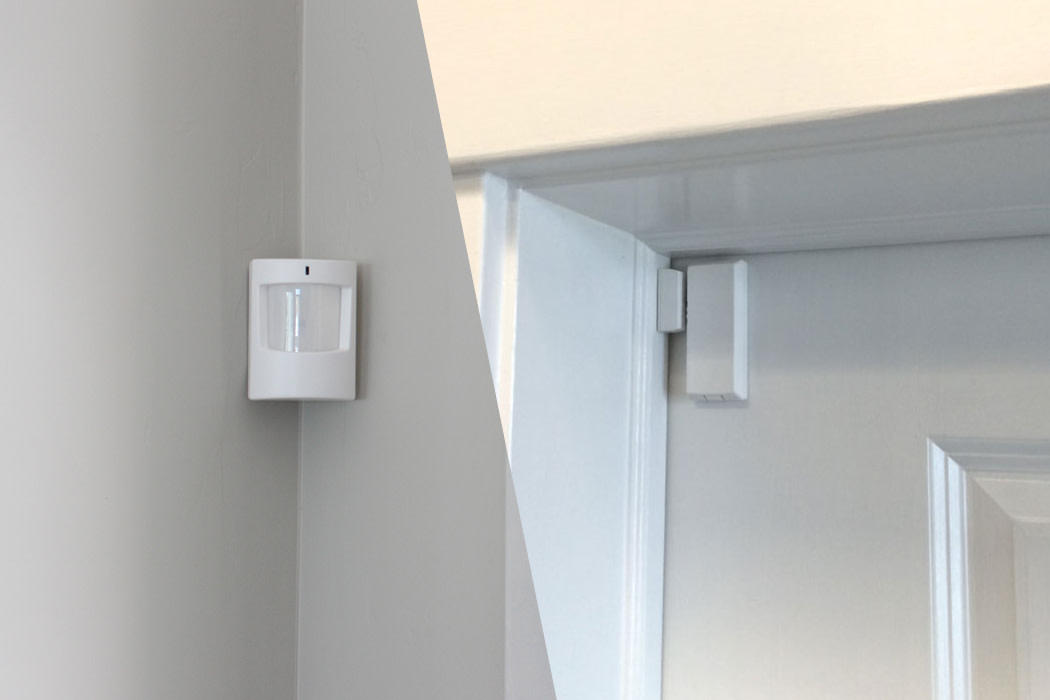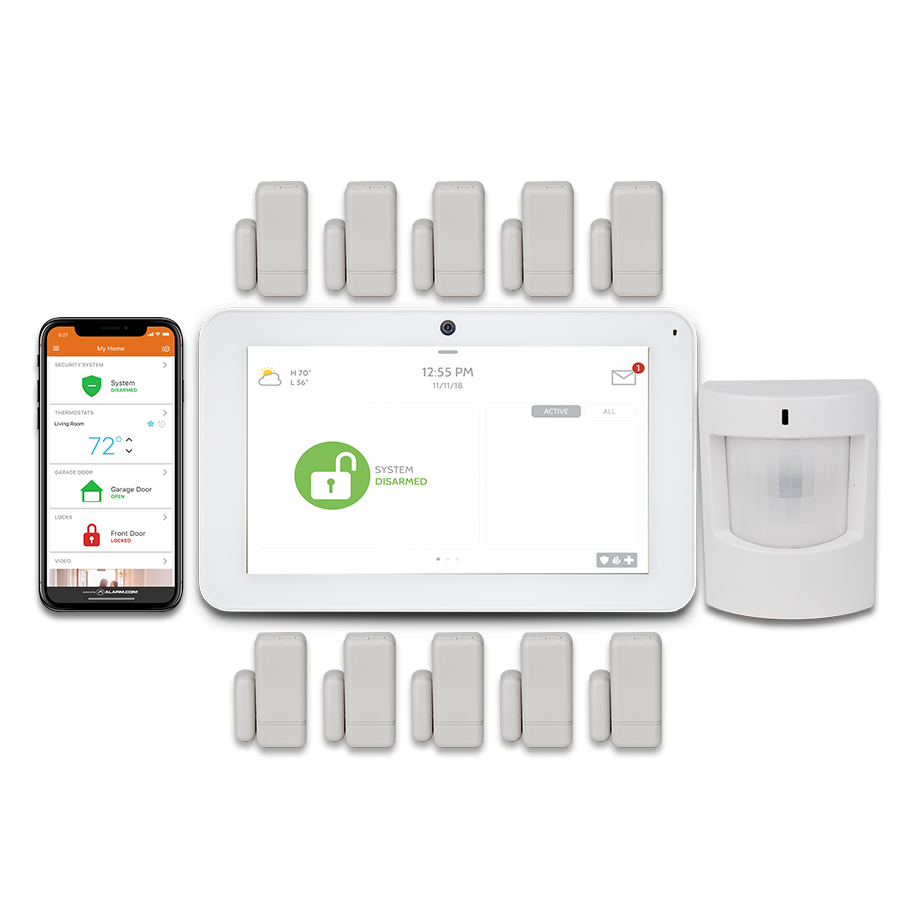Introduction to Home Security Systems
Home security systems are a vital component in safeguarding residences from unauthorized access and potential threats. They have evolved significantly over the years, incorporating advanced technologies to enhance their effectiveness. Among the various elements that constitute a comprehensive security setup, motion sensors stand out as a crucial feature due to their ability to detect unusual movements and prompt alerts.
The Role of Motion Sensors in Home Security

Motion Detector on Shelf
Motion sensors have become a cornerstone of modern home security systems due to their ability to detect and respond to physical movement within a specified area. These devices are instrumental in providing security alerts and automation functions that enhance the safety and efficiency of homes.
At their core, motion sensors work by using various technologies to detect movement and can be classified into passive and active types. Passive sensors, such as Passive Infrared (PIR) sensors, detect motion based on changes in heat patterns. In contrast, active sensors emit signals, such as microwave or ultrasonic waves, and measure reflections to identify movement. This dual categorization helps tailor systems to specific security needs, environments, and threat levels.
Motion sensors typically trigger an alarm or alert when unauthorized movement is detected. This feature is crucial in home security because it serves both as a deterrent to intruders and as an early warning system for homeowners. According to a 2020 report by the FBI’s Uniform Crime Reporting Program, properties equipped with security systems are 300% less likely to be burglarized than those without.
The following table highlights some key characteristics of commonly used motion sensors:
| Type of Sensor | Key Feature |
|---|---|
| Passive Infrared (PIR) | Detects changes in infrared radiation (heat) |
| Microwave Sensors | Uses microwave pulses and measures their reflection |
| Ultrasonic Sensors | Emits ultrasonic sound waves to detect motion |
Additionally, motion sensors are increasingly used in conjunction with camera systems, allowing for optimized recording triggered by detected movement. This integration reduces unnecessary data capture and storage, focusing surveillance efforts more effectively.
By effectively detecting and responding to potential threats, motion sensors play a crucial role in elevating the security capabilities of modern home protection systems. Their continued development and technological advancements further strengthen their role and underscore their importance in safeguarding residential environments.
Types of Motion Sensors

Motion Sensors
Motion sensors are a critical component in enhancing a home security system’s effectiveness, and understanding the various types available can help homeowners make informed decisions. These sensors employ different technologies to detect movement, each with distinct characteristics suitable for various applications.
1. Passive Infrared (PIR) Sensors
PIR sensors are among the most common in home security systems. They detect infrared energy emitted by warm bodies. When an individual moves across its field of view, a PIR sensor senses the change in infrared radiation levels. This technology is energy-efficient and effective in distinguishing between humans and small animals, thereby reducing false alarms.
2. Microwave Sensors
Unlike PIR sensors, microwave sensors emit microwave pulses and measure the reflection off a moving object. These sensors can cover a larger area and are not limited by temperature changes. However, they tend to be more expensive and can sometimes penetrate through walls, potentially causing false alarms.
3. Ultrasonic Sensors
Ultrasonic sensors use sound waves to detect movement. They emit ultrasonic bursts and monitor the reflection off moving objects. These sensors are highly accurate but can be affected by environmental factors like temperature and humidity. Their ability to detect finer movements makes them suitable for sensitive areas.
4. Dual-technology Sensors
To enhance reliability and reduce false alarms, dual-technology sensors combine two different detection methods, usually PIR and microwave. Both sensors must be triggered to set off the alarm, enhancing detection accuracy. While they tend to be costlier, the improved performance can be beneficial in critical areas.
The table below summarizes key features of these motion sensor types:
| Sensor Type | Key Features |
|---|---|
| Passive Infrared (PIR) | Cost-effective, low power consumption, detects infrared radiation |
| Microwave | Longer range, detects motion through walls, higher cost |
| Ultrasonic | High sensitivity, sound wave detection, affected by environmental factors |
| Dual-technology | Combines multiple technologies, reduces false alarms, higher cost |
Each type of motion sensor technology serves specific needs and offers unique advantages and disadvantages. Homeowners should evaluate their specific security requirements, budget, and property layout to choose the appropriate sensor type that ensures robust security coverage.
Advantages of Integrating Motion Sensors

Home Security Package motion
Integrating motion sensors into home security systems offers several notable advantages that significantly enhance the safety and efficiency of security measures. One key advantage is their ability to provide continuous monitoring without the need for human intervention, making them crucial for maintaining security at all times.
Benefits
Real-Time Alerts: Motion sensors can be connected to centralized security systems, triggering alerts in real-time when movement is detected. This feature enables immediate notification of potential intrusions, allowing homeowners or security personnel to respond quickly to potential threats.
Energy Efficiency: Many modern motion sensors are designed to conserve energy. They activate only when movement is detected, which reduces the power consumption of the entire security system. This energy efficiency is particularly beneficial for systems reliant on battery power.
Cost-Effectiveness: Motion sensors are generally affordable and provide a cost-effective solution for enhancing home security. Their ability to detect unauthorized movement negates the need for constant human surveillance, leading to reduced labor costs and overall expenditure on security management.
Moreover, integrating motion sensors with other smart home devices allows for a more comprehensive security setup. For example, they can be used to trigger alarms, turn on lights, or even activate cameras to capture images or video footage of the detected motion. This interconnectedness enhances the overall effectiveness and utility of home security systems.
The following table outlines some common features of motion sensors and their benefits:
| Feature | Benefit |
|---|---|
| Customizable Sensitivity Levels | Reduces false alarms by allowing users to adjust sensitivity to account for pets, insects, or other non-threatening movements. |
| Wide Detection Range | Enhances coverage area, minimizing blind spots within the property. |
| Integration with Smart Devices | Allows synchronized operation of multiple security components, improving response times and coordination. |
Overall, the integration of motion sensors into home security systems is an effective way to bolster protection and ensure peace of mind for homeowners. By delivering real-time alerts, promoting energy efficiency, and reducing costs, motion sensors offer substantial advantages that make them an essential component of modern security solutions.
Challenges and Considerations

Implementing motion sensors in home security systems, while beneficial, poses several challenges and considerations that homeowners need to understand. An effective deployment requires careful planning and understanding of potential issues that might arise, ensuring that these sensors function optimally.
False Alarms
One of the primary challenges associated with motion sensors is false alarms. These can occur due to environmental factors such as pets, changes in lighting, or objects moving due to wind. It is crucial to choose sensors that are specifically designed to filter out non-threatening movements, which minimizes the frequency of false alarms.
Installation Complexity
The installation process can be complex, particularly for systems that require precise calibration and alignment. DIY installations may lead to improper sensor placements, affecting the overall effectiveness of the security system. Homeowners may need professional installation services, which could increase expenses.
Maintenance Needs
Regular maintenance is necessary to ensure that motion sensors function correctly. This includes cleaning sensors to remove any dust or debris and checking the battery status for wireless models. Scheduled maintenance can prevent minor issues from progressing into significant malfunctions.
The following table outlines some common challenges alongside considerations that can mitigate these issues:
| Challenge | Consideration |
|---|---|
| False Alarms | Choose sensors with advanced algorithms to reduce false alarms. |
| Installation Complexity | Consider hiring professionals to ensure proper setup. |
| Maintenance Needs | Plan for routine checks and maintenance schedules. |
Privacy Concerns: Another important consideration is privacy. Some individuals are concerned about sensors that may monitor or record movements within the home. To address these concerns, homeowners should opt for sensors that offer customizable settings and clear privacy policies.
In summary, while motion sensors significantly enhance home security systems, their implementation requires thoughtful planning to address potential challenges. By considering factors such as false alarms, installation complexity, maintenance, and privacy, homeowners can optimize the performance and reliability of their security systems.
Overall, the future of motion sensor technology in home security systems looks promising, with continuous innovation likely to provide more reliable, intelligent, and integrated solutions for homeowners seeking enhanced security measures.
